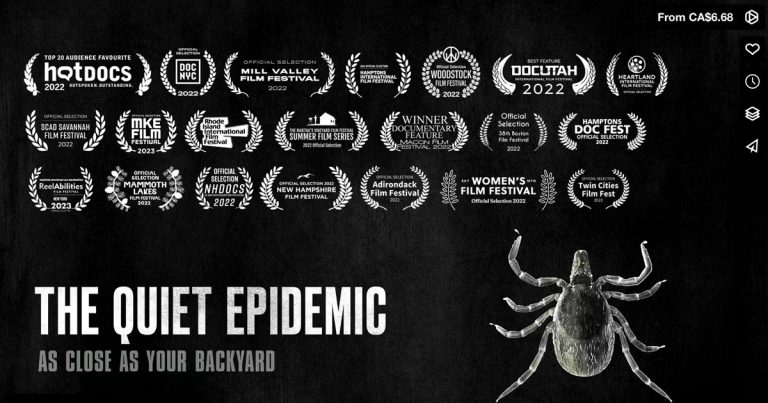Finding Resilience: A Teen’s Journey Through Lyme Disease
The writing in this book is captivating, moving back and forth between Rachel’s perspective and what Dorothy recalled about those same events.
Insert HTML here

The writing in this book is captivating, moving back and forth between Rachel’s perspective and what Dorothy recalled about those same events.

Help keep kids safe in the outdoors by learning about ticks and Lyme disease.

Deepen your understanding of Lyme disease and other tick-borne infections through online learning.

Monica Embers discusses her research findings in this latest course from Invisible International.

Published December 29, 2023 in Healthcare Authored by Jennifer L. Fagen, Jeremy A. Shelton, Jenna Luché-Thayer Abstract: Even though there are approximately half a million new cases of Lyme disease in the US annually, according to the CDC, it is often undiagnosed or misdiagnosed, which can result in a chronic, multisystemic condition. Lyme disease is…

This work can save lives. You can keep helping us.

Being aware of ticks and tick-borne illnesses can help prevent serious health problems at home and away.

Visionnement en ligne- The quiet epidemic.

Using genetic association study methods, we identify an accessory genome signature associated with dissemination in humans and define the individual plasmids and genes that make up this signature.

Background Lyme borreliosis (LB), caused by Borrelia burgdorferi (Bb), is the most common tick-borne infection in Germany. Antibodies against Bb are prevalent in the general population but information on temporal changes of prevalence and estimates of seroconversion (seroincidence) and seroreversion are lacking, especially for children and adolescents. Aim We aimed at assessing antibodies against Bb and factors associated with seropositivity…

Abstract Key Clinical Message Lyme neuroborreliosis is the manifestation of Lyme borreliosis that impacts the nervous system. It gives rise to various neurological and psychiatric conditions, and its diagnosis is challenging. The timely administration of antibiotics is effective. A male patient, aged 55, was admitted to the emergency department due to the sudden onset of…

A bite from a tick left a 6-year-old Arkansas boy fighting for his life, his mother says, and he may not be the same when he wakes up. In late June, Aiden Debusk went on a short hike with his family, his mother, Laiken Debusk, told KTHV. She checked her kids for ticks when they…
Abstract The tick, Ixodes scapularis, vectors pathogens such as Borrelia burgdorferi, the bacterium that causes Lyme disease. Over the last few decades I. scapularis has expanded its range, introducing a novel health threat into these areas. Warming temperatures appear to be one cause of its range expansion to the north. However, other factors are also involved. We show that…
Abstract This study aimed to demonstrate that severe neurological motor deficits in the context of late tick-borne disease with mixed microorganism involvement are eligible for long-term combined antibiotic/antiparasitic treatments. The inclusion criteria were: 1. neurological limb paralysis with a disability score >4 according to the EDSS Kurtzke disability scale; 2. serological tests pointing to an…
Abstract Ticks transport and transmit microbial pathogens that inflict malevolent diseases on domestic and wildlife animals, and humans. We reveal the first-time record of the blacklegged tick, Ixodes scapularis, in British Columbia (BC) and, concurrently, far western North America. We unveil the primary tick-host record of I. scapularis parasitizing a Mallard duck, Anas platyrhynchos. In…